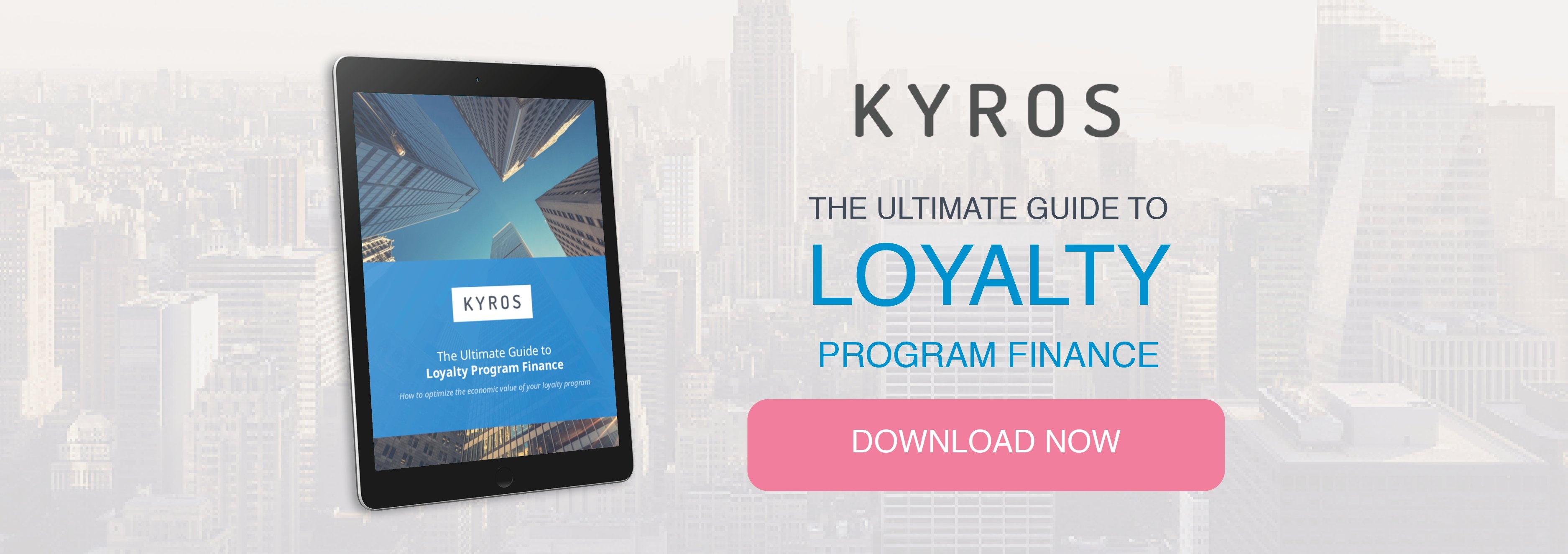When it comes to performing customer loyalty analytics, there are numerous strategies that will get you the data-driven insights you need to build better, more profitable programs.
But how should you NOT go about running analytics for your customer loyalty data?
From lost profits to missed lifetime-value opportunities, taking the wrong approach to your analytics strategy can have long-term consequences for your business. Let's explore some things to avoid and how you can protect your program from bad decisions and ineffective analytics strategies.
Don't Rely on Historical Data Views Alone

A historical view into your loyalty program's data can tell you a lot: how customers' behaviors have shifted over time, what tactics and products have been successful at generating ROI, overall program scope and growth. Historic analytics are relatively easy to produce, requiring basic aggregation and calculation of data from the past.
But analytics based solely on historical trends fall short when it comes to helping you strategize for the future. Sure, your recent historic trend report tells you what program participants did in the past, but, according to experts like Jay Weinberg, its ability to anticipate the program's future and inform future decisions is limited at best.
Instead, build your customer loyalty analytics strategy around a predictive data view. Invest in creating data-driven predictive 'customer lifetime values' (CLVs) that map out future expected revenue, cost of goods sold, future rates/costs of rewards redemption and other key indicators. Track the progress and ROI of your program against increases in CLV to help you find the most valuable loyalty members and mitigate wasted spend.
Don't Confuse Incremental Value With Self-Selection

Employing basic ROI-measuring tactics for your loyalty program might seem like a no-brainer, but beware — traditional A/B testing and incremental value analytics have blind spots that even the most seasoned program managers can miss.
Take the 'look-alike' analysis for example: A group of 40 similar customers is divided into two subsets: those that enrolled in the loyalty program and those that didn't. The company tracks the spending behavior of the 20 enrolled against that of the 20 unenrolled to gauge the impact of the loyalty program on spending.
Sounds straightforward, right?
Wrong. For one, most customers who aren't involved in the loyalty program can't have their behavior monitored at all, meaning that half of the data set isn't contributing any valuable insight into program performance and behavioral spending impact.
More damaging to the long-term planning of the program, however, is the likelihood of self-selection. On the surface, it makes sense to leverage spend data of customers enrolled in the loyalty program — but these people are fundamentally more likely to continue spending money with a company, regardless of their participation in a rewards program. They joined because they liked the company's product, prices or values, and incremental value tests do little to reveal how much loyalty program enrollment impacted their decision to buy more.
Relying on these tests can be damaging to a customer loyalty analytics strategy, resulting in unrealistic and unsustainable projections for the impact of enrollment that can really hinder ROI down the road.
Don't Overestimate Breakage

Even the most sophisticated customer loyalty analytics teams overestimate breakage. At its most basic, that means they're assuming that the points and rewards they're issuing will cost them less than they actually will in the long run.
You don't need an actuarial background to see the risk in this errant thinking — miscalculating the rate at which program members will cash in on their rewards can lead to major ROI challenges in the short and long term, and can even foreshadow program insolvency in the long term.
So what makes this a common phenomenon?
Companies are overestimating breakage because their predictive analytics models aren't responsive or adaptable enough. In-house tracking and analytics solutions lean on spreadsheets to estimate breakage and track the ever-shifting rates of enrollment and rewards redemption. These homegrown methods are often built around historically aggregated data, meaning that the predictors for member behavior are likely out of sync with current trends.
The result? Delayed comparisons of incentives against current redemption and spend trends, which damages ROI and can cost the company serious money.
Don't Assume You Understand Customer Lifetime Value (CLV)

CLV data is the lifeblood of your customer loyalty analytics strategy. It's a powerful metric that, when used right, enables you to build predictive strategies for the future and maximize program ROI.
But CLV is often misunderstood.
For starters, it's doesn't look to the future. Traditional programs calculate CLV based on the profits-generated-to-date by their members, meaning they don't have mechanisms to predict and plan for future profits earned. This makes it challenging to gain a solid understanding of your program's long-term ROI and balance the risk of future liability with future profits.
It's also not a single data point.
While calculating the average CLV across your member base has its place, it's a limited approach that prevents your program from engaging in the most ROI-effective tactics: targeting members whose trends and behavior suggest that they're likely to be a high-CLV enrollee. Identifying these folks means using predictive CLV at an individual level — a tall order for loyalty programs without the right analytics infrastructure in place.
Traditionally, it can't net out redemption costs on an individual-member basis.
CLV often reflects top-line revenue accrued from program enrollees, rather than the bottom-line profits netted after rewards and incentives have been cashed in. Including redemption costs in your calculations is a mission-critical step for understanding the true impact of the loyalty program, and for quantifying the reward your company is getting in exchange for the liability on the balance sheet.
These details serve as key ammunition for any analyst looking to prove value and demonstrate loyalty program ROI to the finance team, as they'll justifiably want to know whether the program is a smart investment.
Innovative customer loyalty analytics strategies are adopted daily by companies looking to maximize the impact of their programs. Now that you're equipped with the knowledge of what to avoid and how to steer clear of common pitfalls, how will you plan for your program's future?





